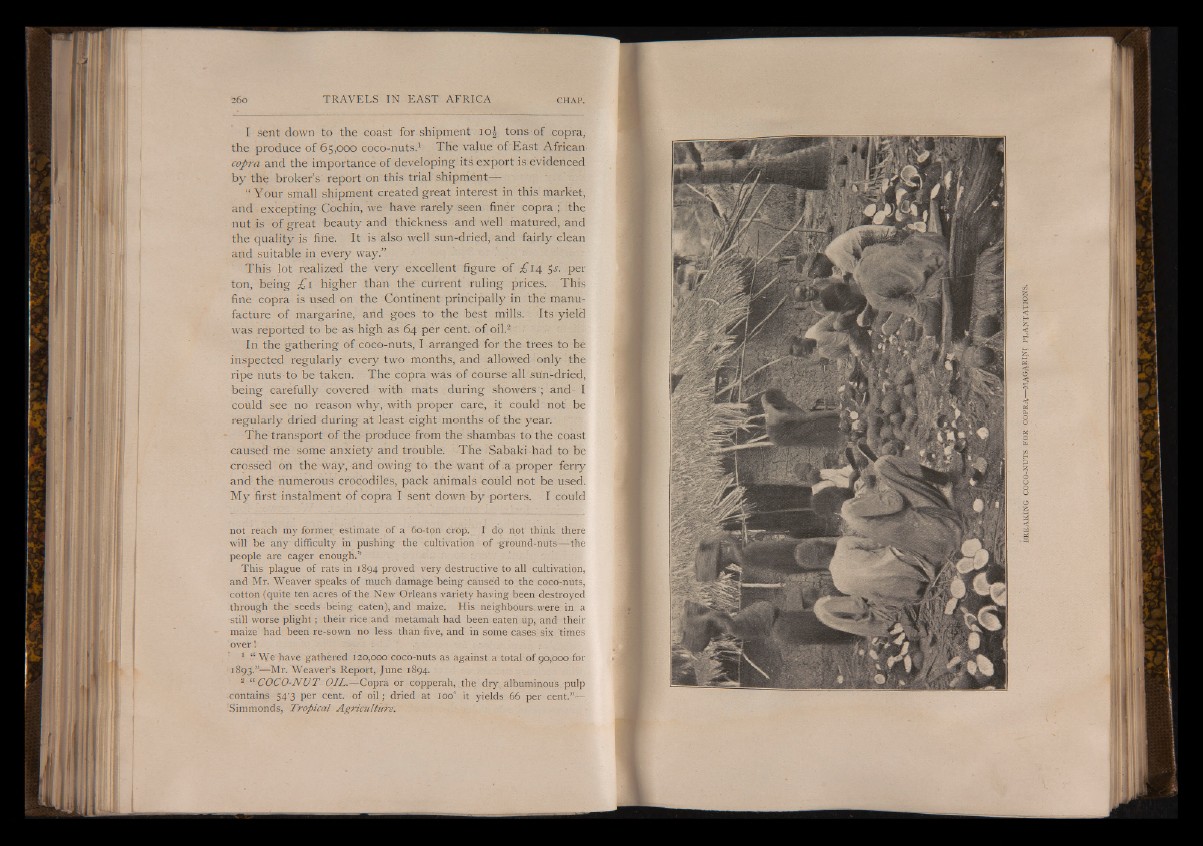
I sent down to the coast for shipment io| tons of copra,
the produce of 65,000 coco-nuts.1 The value of East African
copra and the importance of developing its export is evidenced
by the broker’s report on this trial shipment—
“ Your small shipment created great interest in this market,
and excepting Cochin, we have rarely seen finer copra ; the
nut is of great beauty and thickness and well matured, and
the quality is fine. It is also well sun-dried, and fairly clean
and suitable in every way.”
This lot realized the very excellent figure o f £14. per
ton, being £ 1 higher than the current ruling prices. This
fine copra is used on the Continent principally in the manufacture
of margarine, and goes to the best mills. Its yield
was reported to be as high as 64 per cent, of oil.2
In the gathering of coco-nuts, I arranged for the trees to be
inspected regularly every two months, and allowed only the
ripe nuts to be taken. The copra was of course all sun-dried,
being carefully covered with mats during showers ; and I
could see no reason why, with proper care, it could not be
regularly dried during at least eight months of the year.
The transport of the produce from the shambas to the coast
caused me some anxiety and trouble. The Sabaki had to be
crossed on the way, and owing to the want of a proper ferry
and the numerous crocodiles, pack animals could not be used.
My first instalment of copra I sent down by porters. I could
not reach my former estimate of a 6o-ton crop. I do riot think there
will be an y difficulty in pushing the cultivation of ground-nuts—-the
people are eager enough.”
This plague of rats in 1894 proved very destructive to all cultivation,
and Mr. Weaver speaks of much damage being caused to the coco-nuts,
cotton (quite ten acres of the New Orleans variety having beeri destroyed
through the seeds being eaten), and maizei His neighbours; were in a
still worse plight; their rice;and metamah had been eaten up, and their
maize had been re-sown no less than five, and in some cases-six times
over!
1 “ We have gathered 120,000 coco-nuts as against a total of 90,000 for
1893A—Mr. Weaver’s Report, June 1894.
2 “ COCO-NUT OIL.-—Copra or copperah, the dry albuminous pulp
contains 543 per cent, of o il; dried at ioo° it yields 66 per cent.”—
Simmonds, Tropical Agriculture.